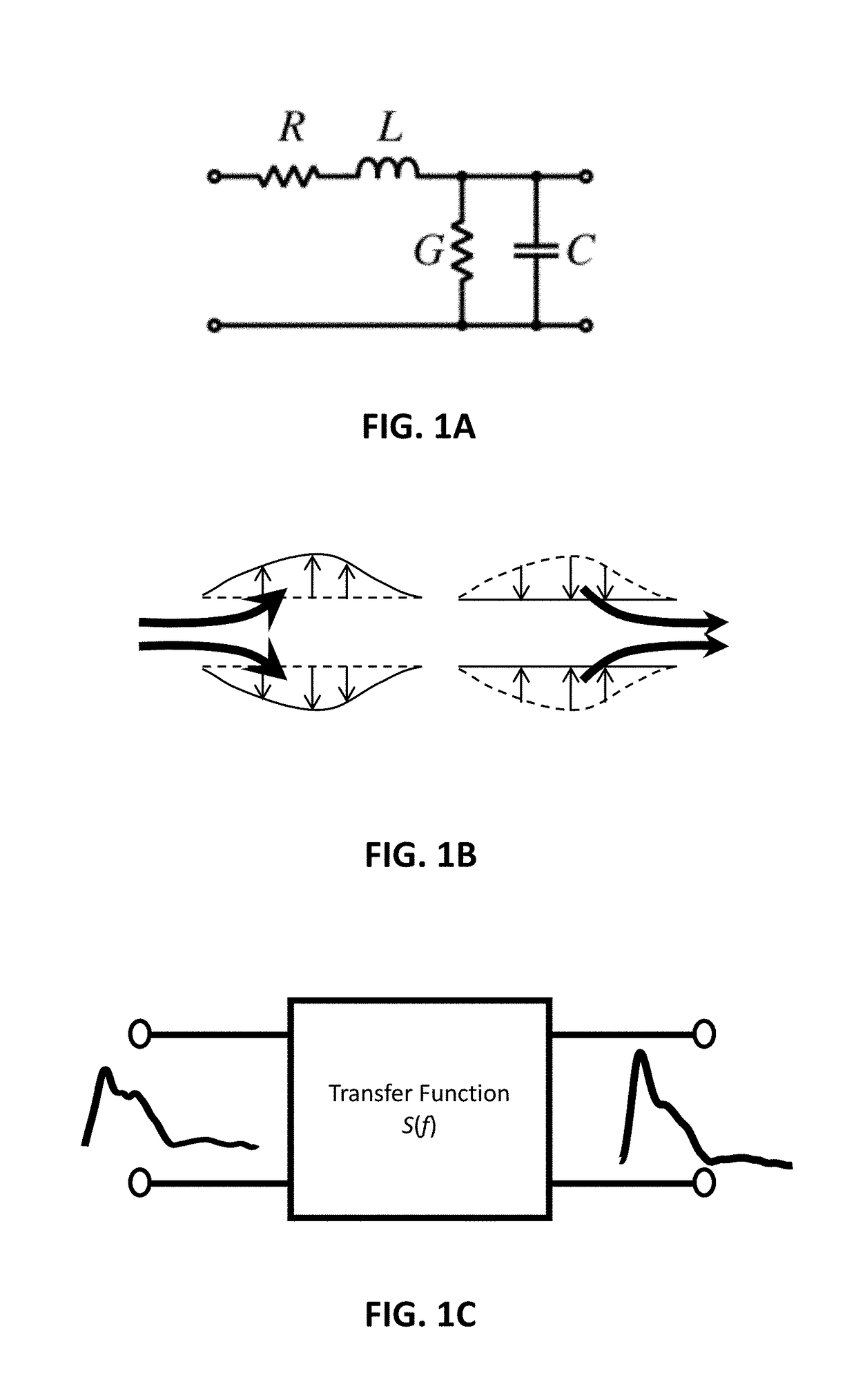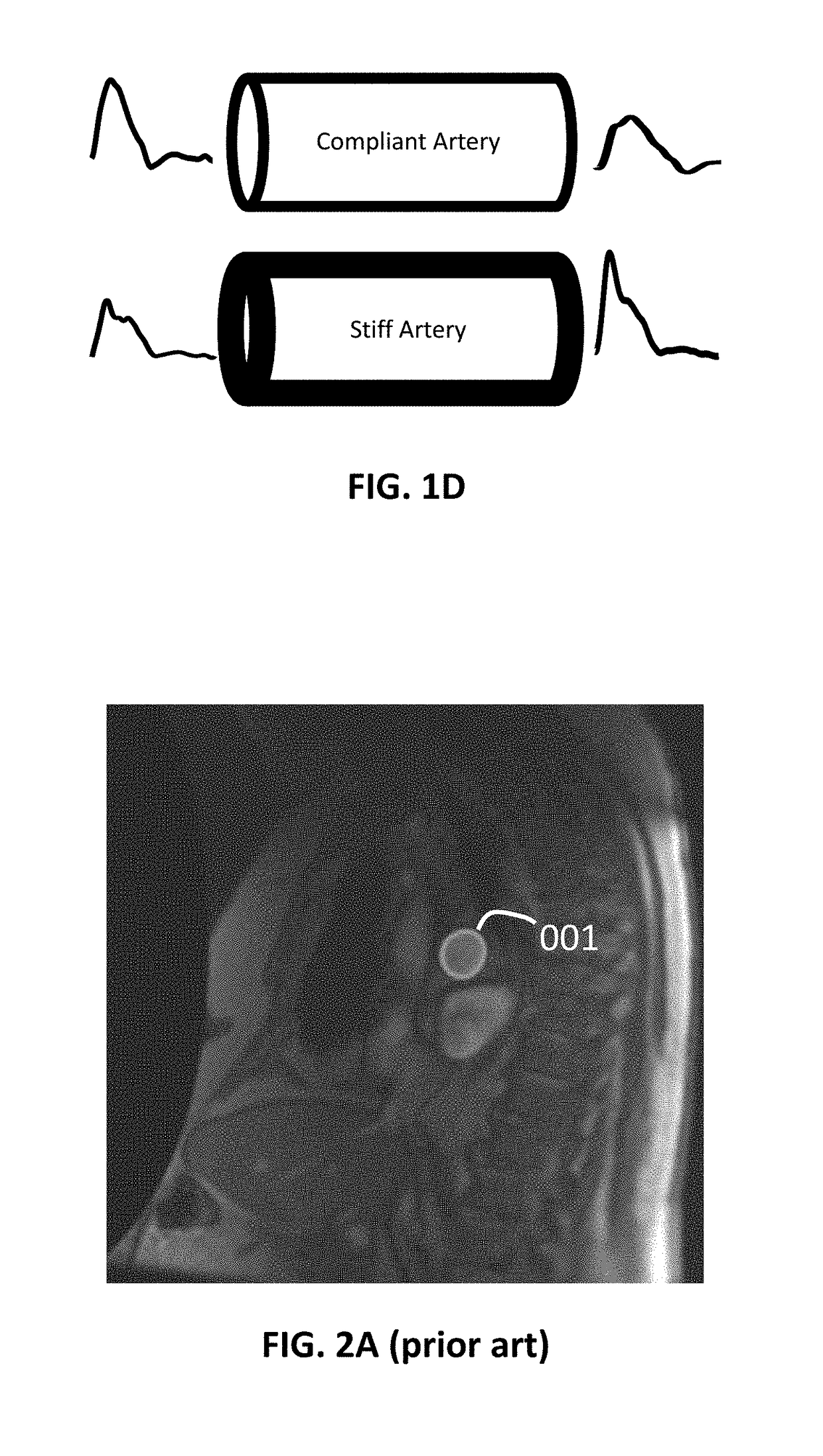Method and system for evaluating blood vessel
a blood vessel and method technology, applied in the field of medical diagnostic and therapeutic devices, can solve the problems of not being able to evaluate how much blood is flowing through, not being able to assign a single value definitive for the entire wave, and not being able to determine the total flow rate of the blood vessel
- Summary
- Abstract
- Description
- Claims
- Application Information
AI Technical Summary
Benefits of technology
Problems solved by technology
Method used
Image
Examples
example 1
Clinical Example 1
[0149]Patients with primary pulmonary hypertension (PH) (n=8), chronic obstructive pulmonary disease (COPD) Gold Stage I-III with no clinical evidence of PH (n=8) and normal controls (n=4) were studied. Each subject underwent PC-MRI to obtain velocity profiles through a slice in the main pulmonary artery (MPA) and a slice through the right pulmonary artery (RPA) proximal to the bifurcation.
[0150]FIG. 8 shows the VTF magnitude versus harmonic for a group of PH patients (017, n=8), COPD patients (016, n=8) and normal volunteers (015, n=4). The VTF at zero harmonic is greater in PH than normals or COPD, which is consistent with high PVR values expected in PH. However, at higher harmonics the COPD group behaves similar to the PH group suggesting increased PA stiffness.
[0151]FIG. 8 shows the average VTF magnitude and phase computed from normal volunteers (normals, 015), patients with PH (017), and patients with COPD (016). These spectra are plotted versus harmonic numbe...
example 2
Clinical Example 2
[0155]In this study, it was hypothesized that a non-invasive PC-MRI derived VTF embodiment correlates with increased PA stiffness / resistance and therefore can provide non-invasive assessment of the pulmonary arterial circuit and RV-PA coupling, which is a condition where RV blood pumping function is impaired due to increased arterial stiffness. In this pilot study, patients who had undergone clinically indicated right heart catheterization (RHC) were prospectively evaluated with cardiac MRI (CMR). The following specific aims were tested:
[0156]Specific Aim 1: To test the hypothesis that novel non-invasive CMR derived VTF, SV(f), correlates with the changes in PA stiffness / resistance as measured by invasive impedance.
[0157]Sub Aim 1: To test whether relationship is independent of elevation in pulmonary capillary wedge pressure (PCWP).
[0158]Sub Aim 2: To test intra- and inter-observer reliability of VTF measurement.
[0159]Specific Aim 2: To test the hypothesis that the...
example 3
Clinical Example 3
[0214]In this embodiment, a single heartbeat pressure waveform was measured with an invasive left heart catheter at a point distal to a suspected stenosis in a coronary artery (earliest time point) and considered to be a reference waveform. The catheter was then pulled back through the area of suspected stenosis yielding a series of single heartbeat waveforms (later time points). A series of PTFs SPi(f) were then computed using the aforementioned formula:
[0215]This procedure was performed on two patients with coronary artery disease. A sequence of PTFs were calculated as described above, and the PTF harmonics versus time are plotted in FIGS. 31A, 31B, 31C, 32A, 32B, and 32C.
[0216]FIG. 31A shows a series of pressure waves as catheter tip is pulled back from a distal point (048) across a stenosis to a proximal point (049).
[0217]FIG. 31B shows the largest magnitude harmonic (harmonic 3) of the PTF versus time. Note the change in harmonic 3 (051) when the catheter cros...
PUM
 Login to View More
Login to View More Abstract
Description
Claims
Application Information
 Login to View More
Login to View More - Generate Ideas
- Intellectual Property
- Life Sciences
- Materials
- Tech Scout
- Unparalleled Data Quality
- Higher Quality Content
- 60% Fewer Hallucinations
Browse by: Latest US Patents, China's latest patents, Technical Efficacy Thesaurus, Application Domain, Technology Topic, Popular Technical Reports.
© 2025 PatSnap. All rights reserved.Legal|Privacy policy|Modern Slavery Act Transparency Statement|Sitemap|About US| Contact US: help@patsnap.com



